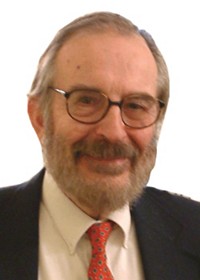Advertisement
Grab your lab coat. Let's get started
Welcome!
Welcome!
Create an account below to get 6 C&EN articles per month, receive newsletters and more - all free.
It seems this is your first time logging in online. Please enter the following information to continue.
As an ACS member you automatically get access to this site. All we need is few more details to create your reading experience.
Not you? Sign in with a different account.
Not you? Sign in with a different account.
ERROR 1
ERROR 1
ERROR 2
ERROR 2
ERROR 2
ERROR 2
ERROR 2
Password and Confirm password must match.
If you have an ACS member number, please enter it here so we can link this account to your membership. (optional)
ERROR 2
ACS values your privacy. By submitting your information, you are gaining access to C&EN and subscribing to our weekly newsletter. We use the information you provide to make your reading experience better, and we will never sell your data to third party members.
People
Roger Adams Award In Organic Chemistry
Recipients are honored for contributions of major significance to chemistry
by Alexander H. Tullo
March 2, 2009
| A version of this story appeared in
Volume 87, Issue 9

Sponsored by Organic Reactions Inc. and Organic Syntheses Inc.
To say that Andrew Streitwieser, emeritus professor of chemistry at the University of California, Berkeley, was a child prodigy is an understatement. Interested in newspaper horoscopes at age nine, he wanted to learn how to divine them himself. When looking for a book on astrology at his local library, he mistakenly took one on astronomy. He was soon riding the subway alone from his native Bronx to attend meetings at Manhattan’s Hayden Planetarium.
The gift of a Gilbert chemistry set at age 11 made him switch interests. The chemistry sets got bigger and bigger each year, and eventually he built a “well equipped” home laboratory. In that laboratory, and while a student at New York City’s Stuyvesant High School, Streitwieser performed experiments that supported a paper that the Journal of the American Chemical Society published, “Chlorination of Fluorene with Sulfuryl Chloride” (1944, 66, 2127). “What really thrilled me was looking in the library and noticing that the paper had been abstracted,” he recalls. “I had achieved a kind of immortality.”
At the time, Streitwieser was also a Westinghouse Science Talent Search trip winner. Coincidentally, on that talent search trip, Streitwieser met University of Illinois chemistry professor Roger Adams. Streitwieser went on to do undergraduate and graduate studies at Columbia University. In 1952, after a postdoctoral position at Massachusetts Institute of Technology with John D. Roberts, Streitwieser joined the faculty of UC Berkeley, where he has been ever since.
Streitwieser’s career has been focused on understanding the mechanisms of reactions. Marye Anne Fox, professor of chemistry and chancellor of UC San Diego, says she knows of no other chemist responsible for such a broad array of discoveries in this field. “Streitwieser is recognized worldwide as the dean of physical organic chemistry,” she says.
Streitwieser was the first to work with α-deuterium secondary isotope effects, which occur when hydrogen in a bond is replaced with deuterium. “His interpretation in terms of the effect of coordination about carbon on C–H bending motions was quickly accepted and became an important tool in organic and bioorganic chemistry,” says Edward M. Kosower, emeritus professor of chemistry at Tel-Aviv University and high school classmate of Streitwieser’s.
The carbon–lithium bond has been another of Streitwieser’s targets. Chemists had thought the bond was substantially covalent. But using a theoretical electron density, Streitwieser showed that C–Li is much less covalent than chemists had thought and is, in fact, essentially ionic. “With that we could go back and reinterpret a lot of what had been known about organolithium chemistry,” Streitwieser says.
Streitwieser and Ulrich T. Mueller-Westerhoff, then a postdoctoral fellow at UC Berkeley, were the first to prepare uranocene. Streitwieser was contemplating ferrocene and wondered whether a metallocene based on actinide-series metals could be created by moving from the d orbitals to the f orbitals. “I was able to extrapolate and realized that instead of a five-membered ring with six electrons, one could use an eight-membered ring with 10 electrons,” he says.
Even as an emeritus professor, Streitwieser has continued to do research. For instance, his group has found equilibrium constants for lithium enolate dimers and tetramers. He is currently working with undergraduate students on computational models of this chemistry.
Among his other accomplishments, Streitwieser has written more than 400 papers and authored several books, including “Introduction to Organic Chemistry” with Clayton Heathcock and Kosower. He was elected to the National Academy of Sciences in 1969.
Streitwieser will present the award address in June at the 41st National Organic Chemistry Symposium, in Boulder, Colo.



Join the conversation
Contact the reporter
Submit a Letter to the Editor for publication
Engage with us on Twitter